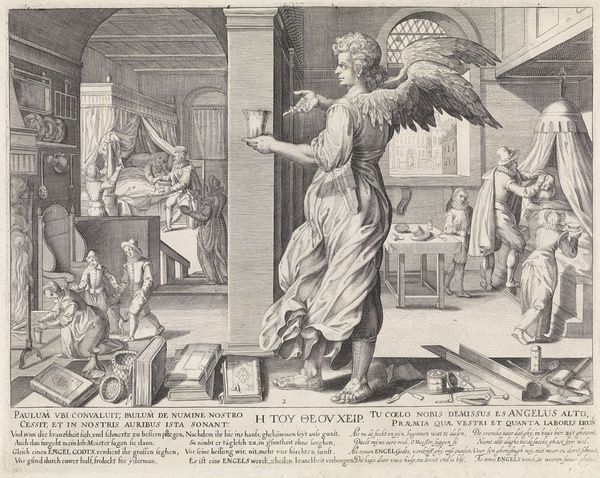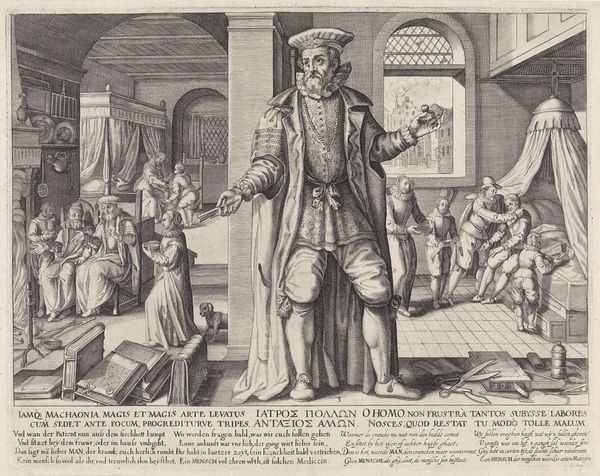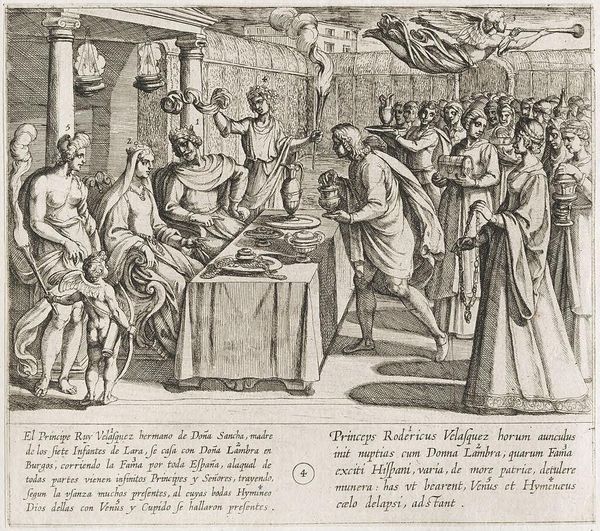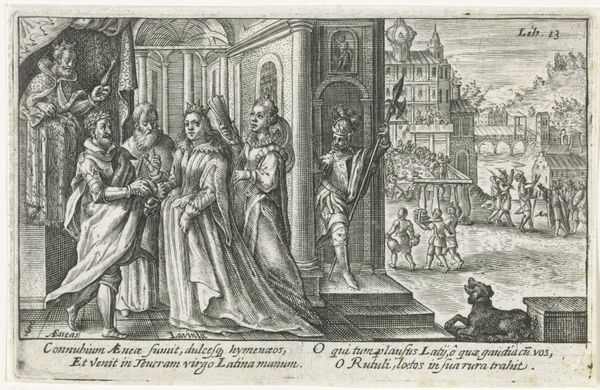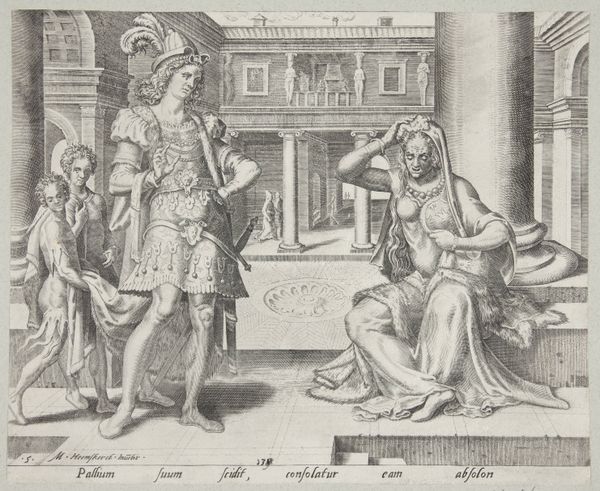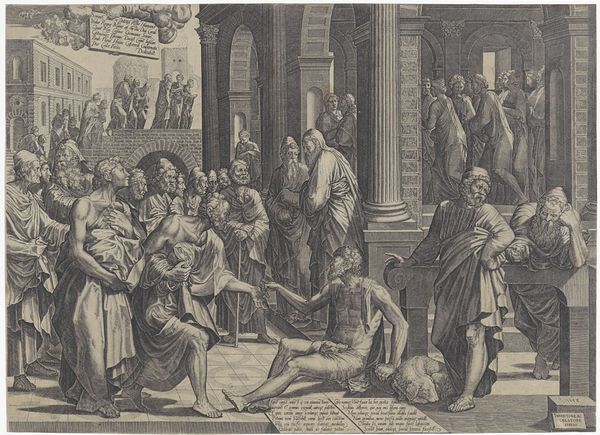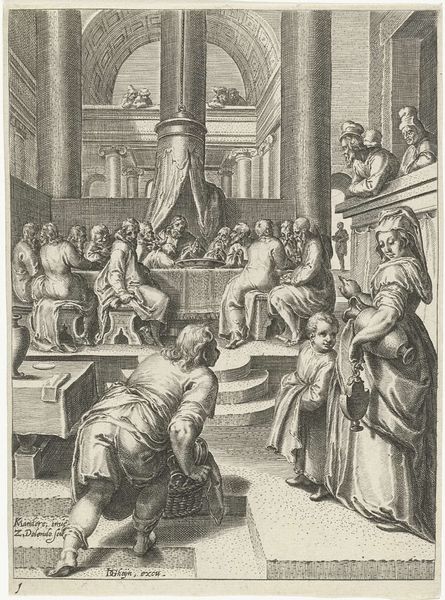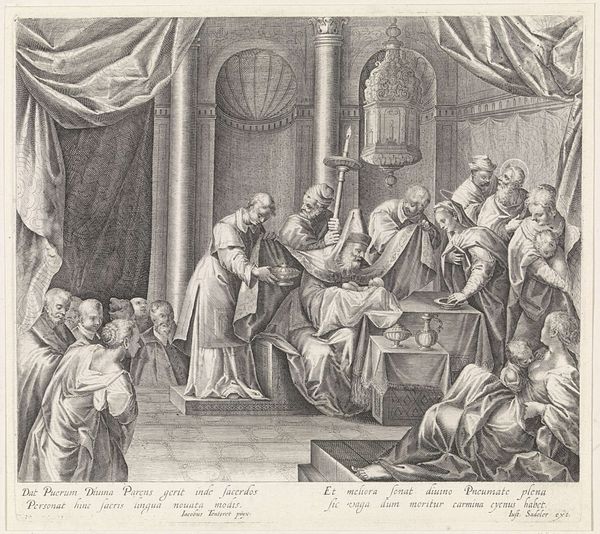
engraving
#
baroque
#
old engraving style
#
figuration
#
history-painting
#
engraving
Dimensions: height 291 mm, width 368 mm, height 291 mm, width 370 mm
Copyright: Rijks Museum: Open Domain
Johann Gelle created this engraving, titled "De geneesheer als God", around 1609. It’s a great example of the printmaker's art. The network of fine lines, made with a tool called a burin, creates areas of dark and light, ultimately forming the image. Consider the time and labor that goes into this process: each line is physically cut into a metal plate, which is then inked and printed. This process allowed for the relatively easy reproduction of images, which democratized knowledge and visual culture in the early modern period. Look closely, and you’ll see that Gelle has really mastered the burin. He knew exactly how to turn lines into light and shadow. It’s worth noting that printmaking in this era was closely tied to the rise of capitalism. Prints were commodities, produced in workshops, and sold in markets. The very act of making this image was part of a larger economic system. Appreciating the skill and labor involved really challenges our traditional ideas about art. It reminds us that the process of making is just as important as the final product.
Comments
No comments
Be the first to comment and join the conversation on the ultimate creative platform.
